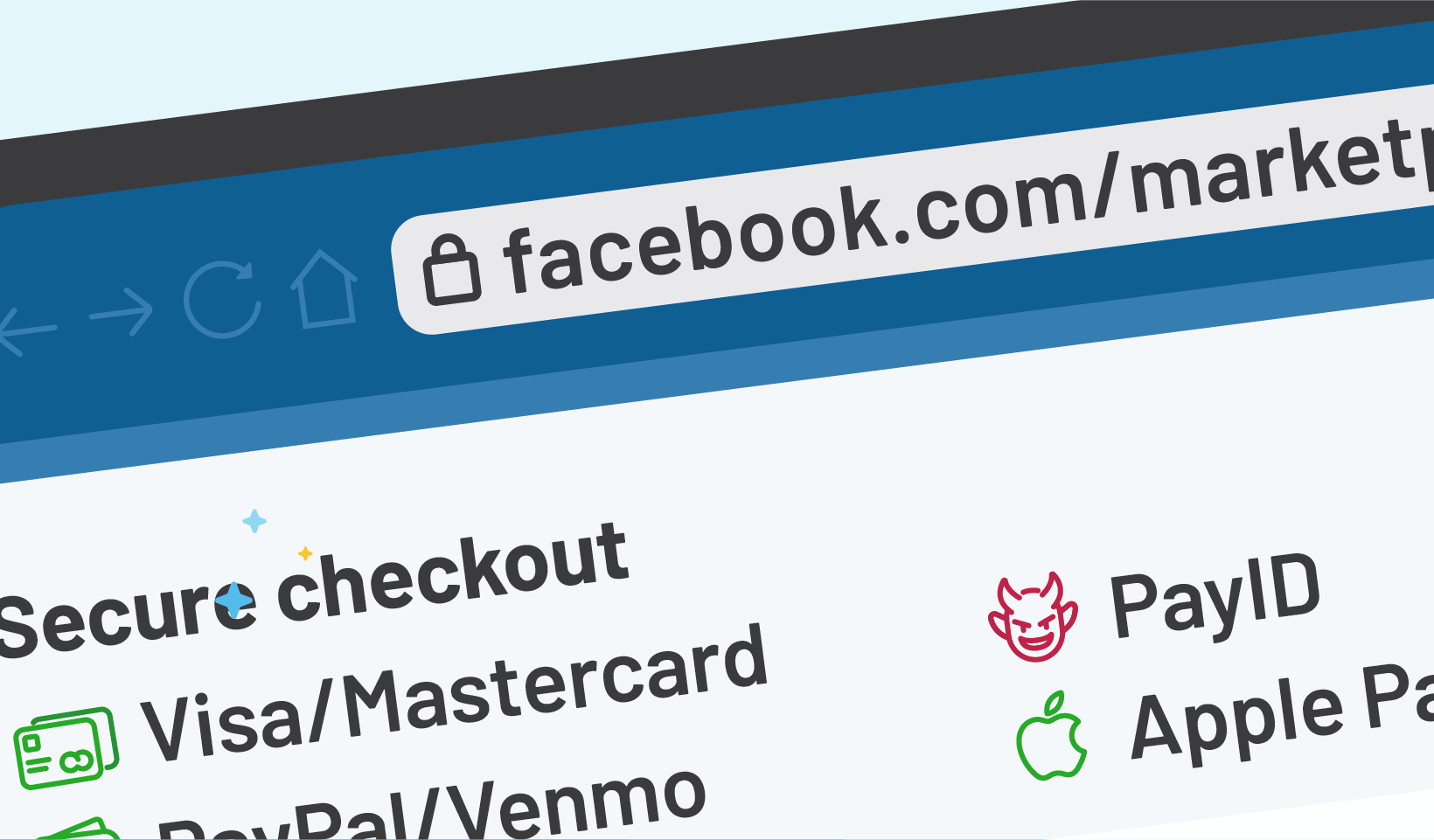If you’ve tried to sell a couch on Facebook Marketplace recently, you’ve probably received a message like this: “I can pay the asking price, but I’ll need a friend to come and pick it up. Do you have PayID so I can make the payment?” Seems genuine perhaps, but more likely it’s a Facebook Marketplace Pay ID scam.
This is an example of a new scam which is quickly doing the rounds on most of the major marketplace trading sites. PayID scams cost Australians over $260,000 in 2022 alone. So how do you spot it, and what are some of the common red flags?
How does the PayID scam work?
PayID is a system, administered through most major banks, which allows users to send and receive money via their phone numbers. It’s a legitimate payment system, established in 2018, and most of the time you don’t need to worry about it. Where users get into trouble is on sites like Facebook Marketplace, where scammers use PayID to collect your personal details and, ultimately, access your bank account.
It works like this:
- The scammers pose as potential buyers and contact the seller via Facebook Marketplace or Gumtree.
- The scammers promise to pay via PayID, but first ask the sellers to send them a token amount – again via PayID – to ‘verify the seller’s identity’. Sellers may also be asked to upgrade to a ‘PayID Business Account’, or refund money ‘sent accidentally’ by the buyer.
- The scammers then create emails and capture forms that appear to be from PayID. These may be via email or text. Users will be encouraged to enter their login or bank details, or even transfer money directly.
What are the PayID scam red flags to watch out for?
The sad reality of scams is they exist until they stop working. So as soon as the PayID scam starts to fizzle, scammers will inevitably move onto something else. Still, in the meantime, here are a few things to watch out for on to spot a PayID scam on Facebook Marketplace or Gumtree. These may not be definitive signs of a scam, but they should be enough to get your guard up.
- Payment via PayID. As soon as you see the words PayID in your inbox, be on your guard. Again, PayID is a legitimate system used by banks all over Australia, but you should be wary about anyone using it on a marketplace.
- No other payment options. Scammers will usually insist on PayID payment, refusing cash or EFT transfer. Again, big red flag.
- Send a friend. Genuine buyers usually want to inspect the goods before purchase. Be wary of any variation on “My friend can come and pick it up” or “A family member will collect the item.”
- Direct communication. PayID is administered through individual banks, which means you’ll never get a direct email, text or phone call from PayID.
- Upgrade your account. PayID is also a free service. Any message that asks you to upgrade or create a business account is a scam.
- Transfer money. This one sounds obvious, but any time a buyer asks a seller to transfer them money, that seller is probably being scammed.
Some online safety tips to avoid falling for a PayID scam
Scammers are becoming more and more sophisticated online, and many of their communications have all the hallmarks of legitimacy. They might appear in the same text thread as previous emails from your bank, have official-looking email signatures, or use email addresses and domain names that are very close to the real thing.
The best way to avoid being scammed? Keep your guard up online.
- Never send money or share personal information with strangers online, especially if they contact your first.
- If you’re ever in doubt, contact the institute or company directly. They’ll be able to tell you if the communication is legitimate.
- Always check the email address or phone number of buyers on marketplace, and make sure they’re attached to a genuine Facebook profile.
- Use secure payment methods, like PayPal or cash on delivery. It’s the only way to be sure.
What to do if you’re being scammed?
If you’ve identified a scammer, the best thing to do is contact ScamWatch and report them. Scamwatch is a website run by the Australian Competition and Consumer Commission (ACCC) that provides information on how to recognise, avoid, and report scams. You can visit scamwatch.gov.au or call 1300 795 995. You should also let Facebook know, so they can investigate and ban the users from the site.
Finally, if you think you’ve already been scammed, contact your bank immediately to report the fraudulent transaction. Ask them to freeze your account and cancel any associated cards. You can also contact the police and file a report, if you’d like to take the matter further.


